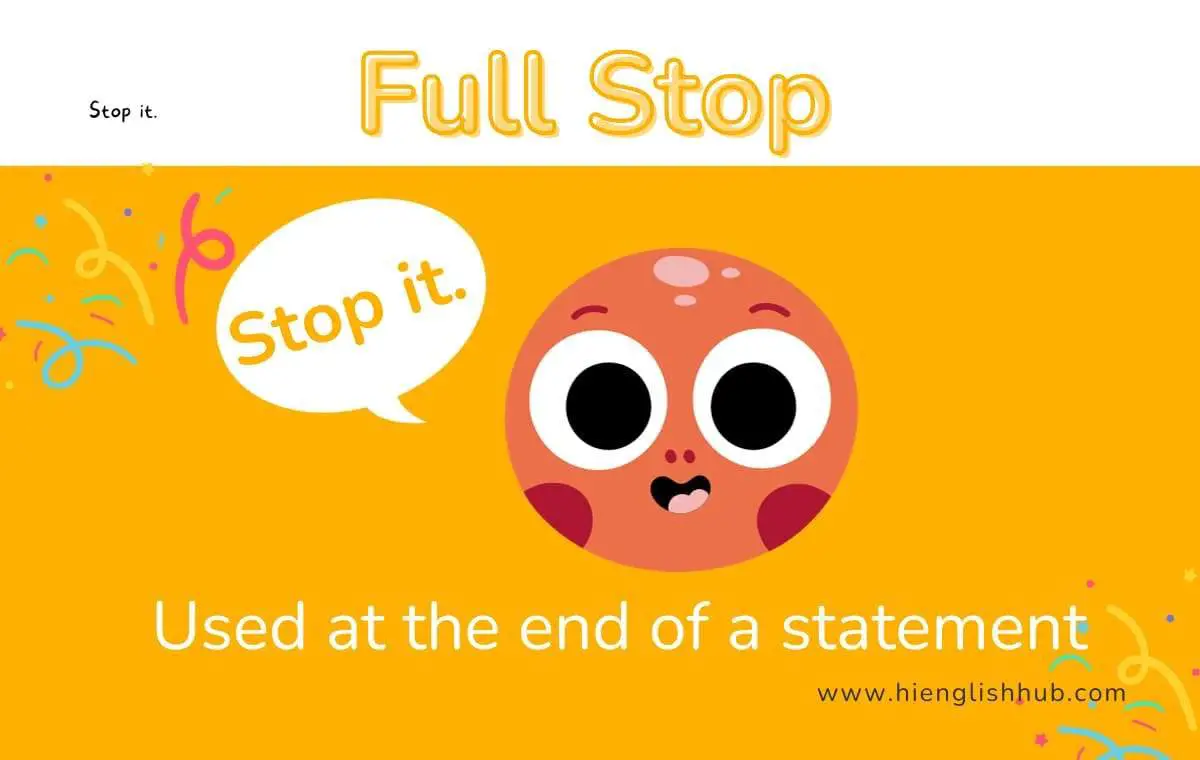Ever noticed that tiny dot at the end of a sentence? They may be small, but using them right can make a big difference.
What Does A Full Stop Mean?
Think of a full stop like a
punctuation traffic signal. When you see it, it’s telling you, “Hold on, we’re done here!” It’s the signal that an idea or sentence has wrapped up, and it’s time to move on to the next one.
Full Stop Symbol
The full stop symbol is quite straightforward—it’s a small, centered dot.
In its simplest form, it looks like this: “.”.
Despite its minimal appearance, this unassuming dot holds significant meaning in the world of punctuation.
Full Stop Vs. Period
You’ve probably heard about its American cousin, the period.
Guess what? They’re like twins, just in different places. In the UK and many other spots, we call it a full stop. In the US, it’s the period.
Same job, different names—fun, right?
When To Use A Full Stop
1. End of a Declarative Sentence:
The most common use of a full stop is at the end of a declarative sentence, which makes a statement or expresses an idea. For instance: “The sun sets behind the mountains.”
2. Abbreviations:
When using abbreviations, like Mr., Mrs., Dr., etc., a full stop is used to indicate the abbreviation. For instance: “Dr. Smith will see you now.”
However, it’s worth noting that style preferences may differ, and some publications or contexts may choose to omit periods in certain abbreviations for the sake of simplicity or modern style.
While periods are commonly used with titles, there are instances where the use of periods may be omitted based on specific style guidelines or individual preferences.
3. End of a Command
After giving a command or making a request, use a full stop. For instance: “Please close the door.”
4. Quotations:
When quoting someone, a full stop is used at the end of the quoted sentence. For example: He said, “I’ll be there on time.”
5. Domain Names and Web Addresses:
Full stops are used in web addresses to separate different parts. Like: “www.example.com.”
6. End of Direct Speech:
When writing dialogue, use a full stop at the end of a character’s statement before closing the quotation marks. For instance: “I can’t believe it,” she exclaimed.
7. Abbreviated Dates:
In abbreviated dates, a full stop is used to separate the day, month, and year. For example: 05.12.2023.
8. After Initials:
When you’re using initials in names or abbreviations, a full stop is placed after each letter. For example: “J. K. Rowling” or “A. B. C. Corporation.”
9. End of an Indirect Question:
If a sentence ends with an indirect question (a question within a statement), a full stop is used. Example: “She asked if he could come over.”
Also read: Question Marks
10. Email Addresses:
In email addresses, a full stop is employed to separate the username from the domain. For instance: “[email protected].”
Also read:

